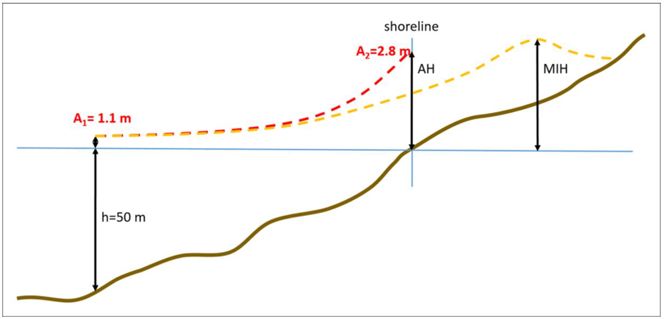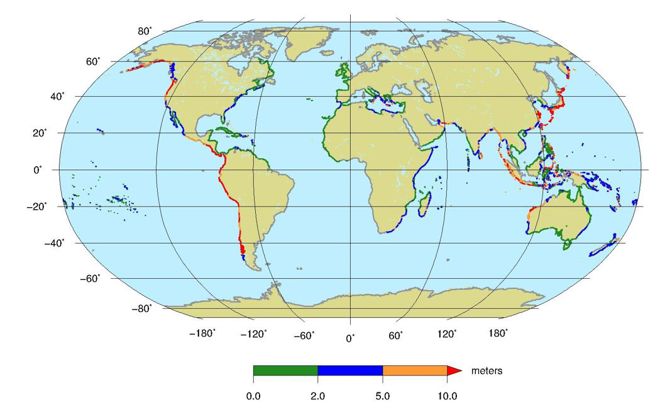Amplification factors for tsunami run-up estimation
Amplification factors can be used to estimate maximum inundation height (MIH) for tsunami run-up based on the local bathymetry (along transects) and wave characteristics measured offshore (mariograms – time history of surface elevation), see Figure 1.
The offshore maximum surface elevation is multiplied by the factor to achieve the MIH estimation. This service is part of the candidate Thematic Core Service for tsunami and will be integrated into the Integrated Core Service Data Portal of the European Plate Observing System (EPOS).
The primary objective of this service will be to give scientists a tool for regional tsunami hazard evaluations, based on time series extracted by tsunami propagation models, without running computationally costly run-up models along the coastlines. An example of the global evaluation of MIH is found in Figure 2.
Model features
- Interface for extraction of the wave characteristics from off-shore mariograms (time history of the surface elevation at a gauge)
- Extract the amplification factors based on the wave characteristics
- Calculation of the maximum inundation height
- Creating hazard maps
Method description
- https://link.springer.com/article/10.1007%2Fs00024-019-02091-w
- A preliminary repository of the data is available at:
https://doi.org/10.5281/zenodo.10732728

Figure 1: Schematic example for how the amplification factors is used to estimate MIH. A1 is the off-shore surface elevation, and A2 is the estimation of MIH (A2 = A1 * amp.factor).

Figure 2: Global tsunami hazard evaluation using amplification factors, from Global assessment report on disaster risk reduction 2015, UNISDR.
Terms and conditions for use is given by CC BY-ND 4.0
AmpFact is one of the services included in the GEO-INQUIRE Virtual Access to the next generation of software as a service (VA4-532-2).
(see https://www.geo-inquire.eu/virtual-access/software for details.)

